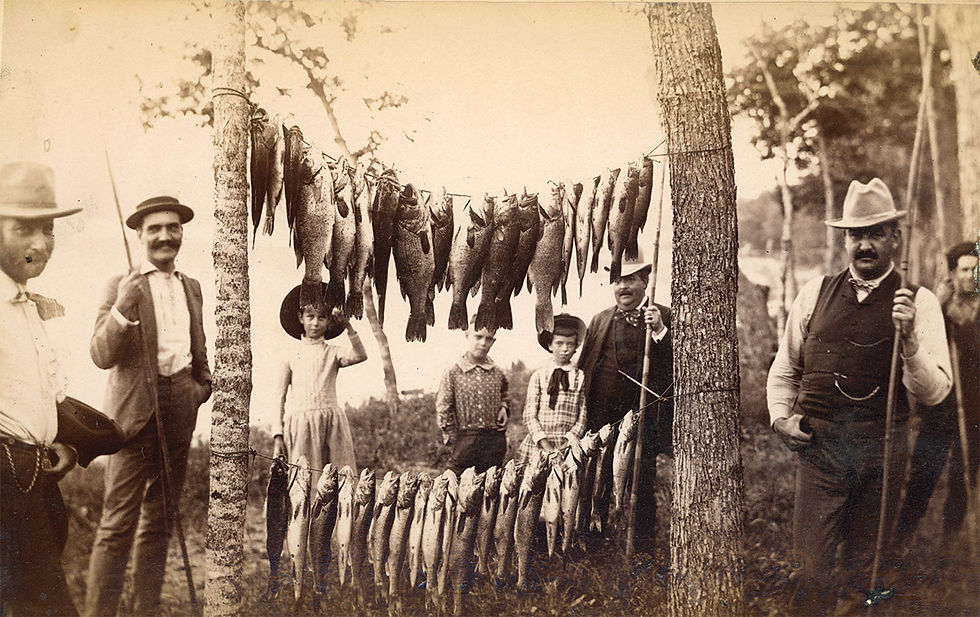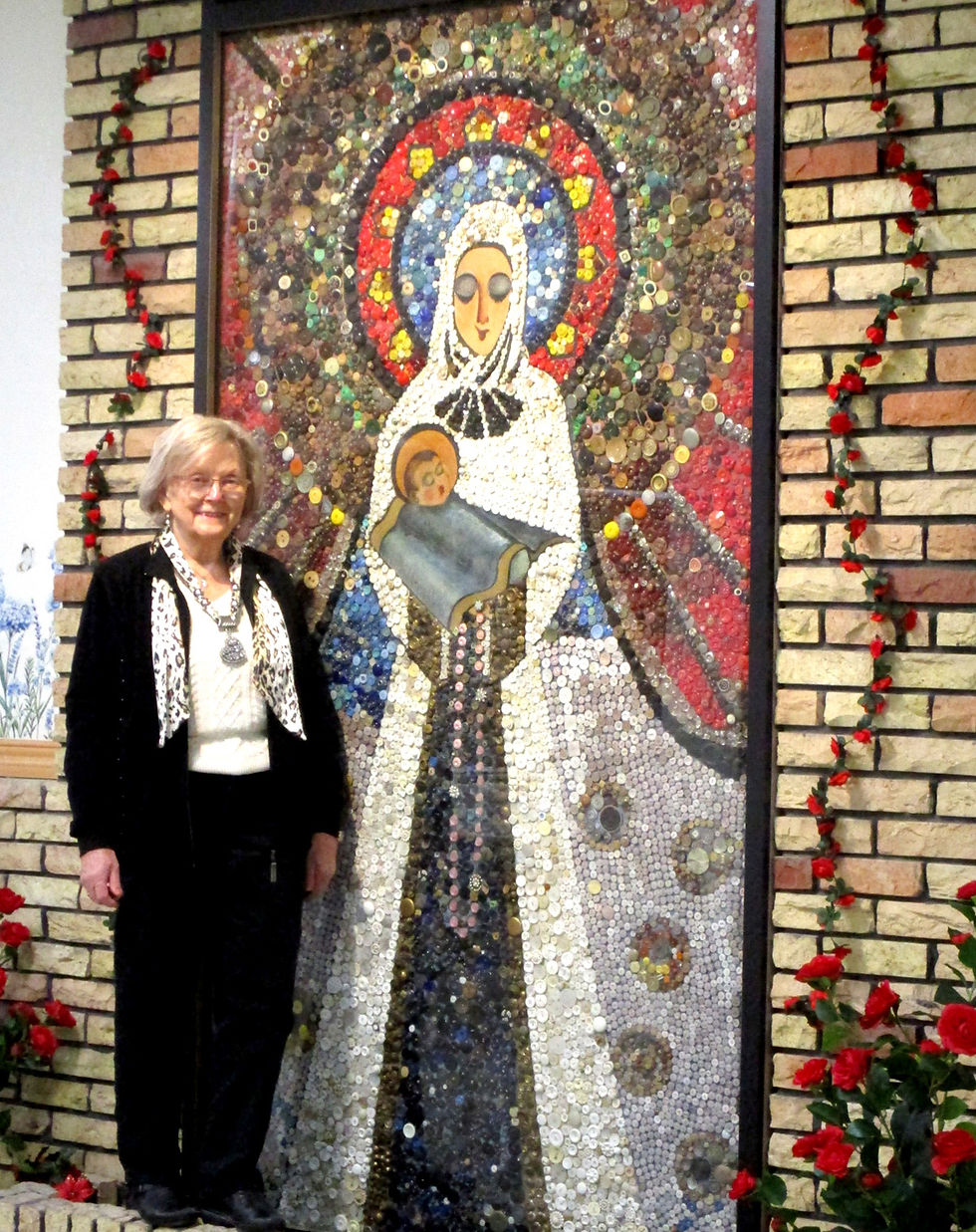A spiritual and cultural journey
- Sr Perspective

- Jun 6, 2025
- 7 min read
BY PATRICIA BUSCHETTE

Stephanie Schwartz Sorensen’s search in life was for wonder. This search has led from her birthplace in Upstate New York, to St. Paul, to Harlem, the monasteries of North Dakota, a cabin in Wisconsin and now to Silver Lake, Minn. During this journey, she has traversed cultures and avenues of spirituality. In the process, she has enriched her life and the lives of countless others along the way.
Stephanie was raised in the home of secular Jews who identified themselves as atheists, and influenced by grandparents whose Jewish traditions were honored only in the safety of their home.
“My grandparents hid because of fear, but kept a kosher house and took me to the Synagogue,” she said.
While she was familiar with the rituals of Judaism, Stephanie did not find her place there.
“I looked into Judaism, but did not find an interior life. I was intrigued by and drawn to different faiths. I visited different churches without telling my parents,” she said.
Stephanie used creative techniques to learn.
“I would get myself invited to be with girls who were Catholic to tell me all about the church. When I was nine, I went to Girl Scout camp for two weeks. I told them I was Catholic. While there, I had my first Holy Communion. I just wanted to know. I read an interesting piece by Francis Thompson, ‘The Hound of Heaven,’ about how God chooses us, we don’t choose him,” she said.
“My parents had no idea what they could have possibly done to end up with someone like me!” she said.

While Stephanie was in Hebrew school, girls in the 1950s were not taught vocabulary.
“I could say all the prayers, but I didn’t know what they meant,” she said.
Stephanie grew up Jewish, but she decided she wanted to be “a nun . . . or a surgeon.”
“I had studied Hinduism for two years by the time I was 19, and I thought I had seen the world,” she said in good humor, “but I wanted an interior life. I read books by Edith Stein, a German philosopher who converted to Catholicism and became a Discalced Carmelite nun. I also read Malcolm Muggeridge’s book ‘Something Beautiful for God’ about Mother Teresa and wrote to her in Calcutta. She would be leaving India for the first time, establishing a house in New York, and in 1971 I went to live with her and five sisters. There we cared for and fed children. It was terribly fun. However, food was not plentiful and we begged from local shops for food,” she said.
Stephanie lived with Mother Teresa in New York for six months. During that time Stephanie became very ill. Not knowing that she was anemic, she saw a doctor who gave her phenobarbital.
“I slept for two weeks,” she said. She was awakened and sent back to her parents in Washington State, instructing her to get healthy and then come back to them. While there she met with the Polish priest from whom she had taken instructions. He told her that he was retiring and would take her to Poland where she could join the Carmelites there.
“They will feed you there!” he told her.
Stephanie had another plan. She visited, then joined, the old world Carmelites in North Dakota.
“Those who came from the outside world to visit the cloistered discalced Carmelites, did so from behind grill bars,” she said. “It meant leaving the world. We were to win souls by penance and prayers. You had given up your liberty for souls.” She put the experience in context by explaining that the order had over 400 years thinking of ways to make it difficult. “I was considered pudgy and was to go on a diet. I went from 155 to 120, became anorexic in the process, and my bodily functions shut down. Another sister had a mental breakdown while I was there. This makes no sense; it is not what God asks of us,” she said.

She was going to leave the cloister. “I was told I would feel guilty until I came back, because I had a calling,” she said. She stayed another year, and again said she was leaving. “I was told, ‘You are not corresponding with grace. You will not have a happy life.’” She stayed with the Carmelites almost four years before leaving.
“I married my husband David in 1977. He was doing post graduate work in theology at St. Thomas in St. Paul and I was working the night shift for Bell Telephone Company. At that time there were many Hmong arriving in the United States. I saw in the paper that they were looking for people to visit the homes of Hmong refugees and teach English. I wanted to teach English. David demurred saying, ‘I am an English teacher, you’re a telephone operator.’”
She acknowledged that she had spent years in monasteries and had not gone to college, but said, “I can teach the alphabet; I can teach colors . . . I can do that,” she insisted.
David and Stephanie began sponsoring refugees. There was a group of 14 Cambodians arriving and sponsors could not be found. Relatives who had arrived earlier did not have enough food to care for more.
“I was given my very own Hmong family that same week: Sai Xor Yang, Po Yee Vang and five children. They lived with us for months.” she said. “Their family came to meet me, six brothers who brought their wives to ‘look me over.’ Wives came the next day along with Grandma MeMe Thao. Cousins then arrived.”
Stephanie explained that originally, they were from Mongolia and lived in the mountains. They were darker than other Asians and were looked down upon.
“The Chinese Huns didn’t want them and pushed them south. They were pushed several generations to Laos where they lived in the mountains because the Laotian people considered them outcasts. It was there that they were of service to the United States government during the Viet Nam war and were promised support,” she said.
“A group that we sponsored was in McDonough Homes, a housing project in West St. Paul where housing conditions were horrible and neighbors were suspicious. They were afraid all of the time, they would not go out at night and slept with machetes under their pillows. I was teaching English and I would go to their homes where I signed paperwork for relatives who wanted to come,” she said.

“We had no money, but we agreed to go to the airport, pick them up and look for an apartment. They were given money for rent, food, and education,” explaining that several families would double up and live in one apartment because they needed to save for a car.
As part of caring for the families, Stephanie delivered them to schools to continue their education and to public health after they got their apartment.
Stephanie had been caring for them for three-to-four years, and was expecting twins, when they visited. They seemed to be inspecting the kitchen and asked where the grandmas were. They returned in about two hours, filling cupboards with food, using their own money. They brought with them an old, wizened woman, saying, “We are giving you our grandma because you have no one to take care of you and the baby, and you have taken care of us.” By this time Stephanie was helping them with home births, often made difficult by medical conditions resulting from the fact that they had been living in camps in Thailand for 20 years. By that time she had hospital privileges in two hospitals.
“We were already sponsoring families. Now we had to talk to landlords and assure them that they were not going to be killing pigs in the living room!” she said.
The accounts of disaster that were experienced were heartbreaking. One couple lost children in the war as they swam across the Mekong River to Thailand as Thai soldiers shot at them, killing three of their children.
Some did well despite all of the challenges they faced. One group who had lost all the men in the family in the war and three women brought children to the United States. The family built an impressive home in Golden Valley and sponsored girls who were stuck in refugee camps.

“That was 30 years ago,” Stephanie said, and went on to explain that the young women became dentists. “They went to the University to learn medical English through grants and scholarships, and they even opened a restaurant.”
As the years passed, Stephanie and David spent days with them, getting to know them.
“My baby Abraham started speaking Hmong at age two. They had to translate what Abe was saying because I hadn’t learned enough Hmong yet. He had said, ‘more rice’ and ‘go out to play.’”
Stephanie says her search for wonder has been answered as she considers the world and her place in it, learning what it means to be human, always hoping to be in touch with a deeper interior life.
“And I still dream of being a surgeon,” she mused. “Perhaps in my next life?”




Comments